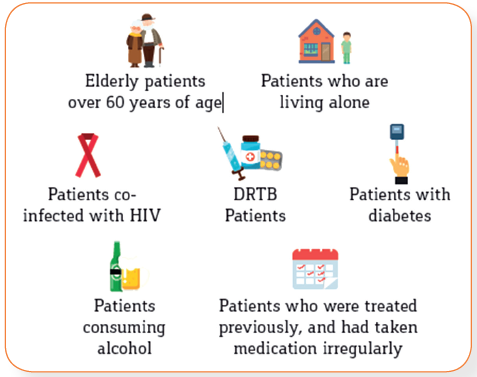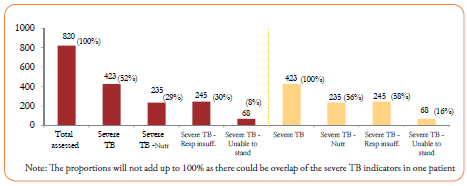Differentiated TB Care Model
Differentiated TB Care Model
Introduction
India has 37% of the global mortality of TB, however, most of us are looking at TB incidence. There is a need to look at mortality. Co-morbid conditions contribute to morbidity and mortality. The CTD has given 18 parameters to assess persons with TB, but they are difficult to learn and apply. Karnataka simplified the document from the CTD as an SOP with criteria for hospitalization.
Severe TB and admission status at notification
| Severe TB (Yes) | Severe TB (No) | Total | |
| Admitted (Yes) | 87 | 78 | 165 |
| Admitted (No) | 336 | 319 | 655 |
| Total | 423 | 397 | 820 |
This would mean, over a 25 day period (15 Oct to 8 Nov = 25 days)
- 336 patients would need systematic referral and pre-treatment evaluation / admission in 16 districts
- 21 (336/16) would need systematic referral and pre-treatment evaluation / admission in one district
TB death Analysis in Karnataka
- 6839 (8%) Persons with TB (PwTB) have died in 2019
- 33 TB Units out of 267 TB Units constitute 30% of deaths in the state.
- 70% of them are microbiologically confirmed.
- 15% of them are HIV reactive, 10% are TB Diabetic
- 15% of them died even before treatment initiation.
- 82% of the deaths have happened among new PwTB.
- The average duration between TB diagnosis and TB death is 57 days.
- 1052 (15%) PwTB have died within 7 days of diagnosis of TB.
Objectives
Introduce differentiated person care based on the assessment of clinical parameters and institutionalize a comprehensive service delivery package for rapid reduction of preventable mortality among Persons with TB.
Approach

- Not all PwTB are same
- The mortality rate was found to be 3 times higher among PwTB with any one of these risks when compared to PwTB having no risks
- DCM prioritises persons through a Risk And Needs Assessment process to provide personalized need-based care and support services
Key Activities
- Assessment of persons with active pulmonary TB
- Clinical
- Lab Based
- Imaging
- Risk Stratification of PwTB for referrals
- Referral for hospitalization
- In-person care package
- Follow-up examinations of PwTB
High-risk TB assessment tool for use by non-medical TB staff
- Assessment by non-medical TB staff at the place of diagnosis
- We have selected indicators from the guidance document that can be assessed by a non-medical TB/ general health system staff
- Severe TB, presence of any one (out of six)
- Body mass index (BMI) ≤ 14 kg/m2
- BMI ≤ 16 kg/m2 with pedal oedema
- MUAC ≤19 cm
- Respiratory rate >24
- Oxygen saturation on pulse oximetry <94%
- Unable to stand without support

Outcomes
- Currently a Commissioner order is in place that every Taluka Hospital and District Hospital is to allow 2-4 beds for PwTB
- In Karnataka, Ayushman Bharat covers PwTB with insurance
Key Recommendations
- It is important to offer a person-centric package of care, not just TB services.
- The aim is to prevent death. The simple criteria are doable by the Medical Officer
Source : TBC India
Last Modified : 3/7/2024
This topic provides information about The Communit...
This topic provides information about Integration ...
This topic provides information about Behaviour Ch...
This topic provides information about Approaching ...
